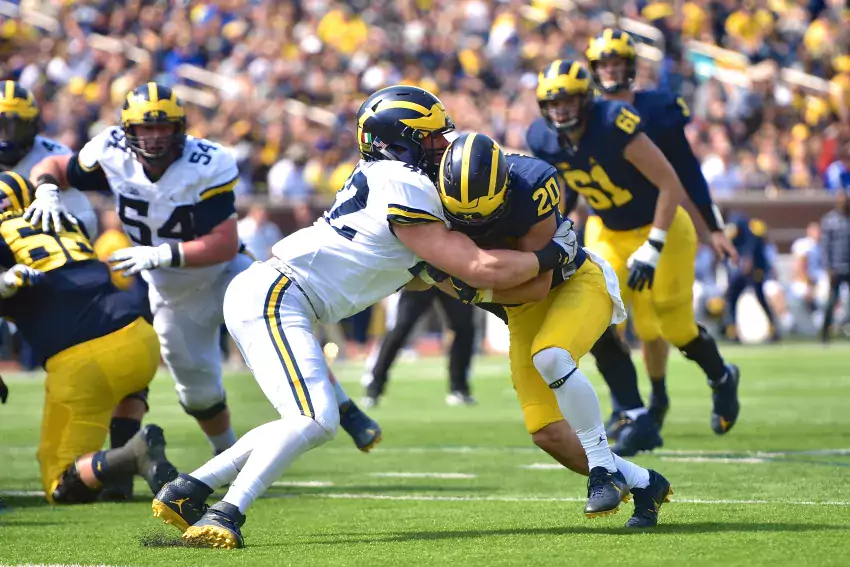
Jimmystats: Does Enrolling Early Do Anything?

After a weird low of just three guys showing up last January, a third of Michigan's signees (so far?) for the 2019 class have arrived on campus and started participating in workouts. I thought it worth going over the Michigan history of early enrollees and seeing if a jump on their development has much of an effect on their careers.
Enrolling Early: History and Statistics
The practice only became common in college football in the mid-2000s, and Michigan's first January participant wasn't until 2005. Unsurprisingly the number drops during coaching transitions; 2008, 2011 and 2015 had just four early entrants between them. This year's was only the second class that could commit in December and you're really committing to the school if you graduate early and start college classes before you know who your position coach is going to be.
These numbers have a ton of noise in them, but they do tell us a few things. I highlighted the big differences I noticed:
| Michigan Recruits 1990-2018 | Early Enrollees | Fall Enrollees |
|---|---|---|
| Players in Study | 71 | 576 |
| Avg ☆ Rating as Recruit | 4.10 | 4.01 |
| Started 1/+ game(s) as True Fr | 24% | 9% |
| Redshirted (as Fr, not medical) | 42% | 65% |
| Did not earn degree | 30% | 25% |
| Did not complete eligibility | 50% | 43% |
| Eligibility used/possible | 64% | 75% |
| Played in the NFL (if eligible) | 18% | 25% |
The extra spring practice does seem to matter when it comes to freshmen who contribute early, but it also seems to lead to greater attrition; even counting the players on the team—a good many of are yet fated to leave with eligibility remaining—HALF(!) of Michigan's early enrollees left Ann Arbor before their clocks ran out.
Michigan football scholarship recruits, 1990-2018 (transfers removed)
By their second year on campus the fall enrollees have caught up, and from there the higher attrition and tendency not to redshirt catches up. Just three early enrollees in my study had any starts as a senior: 11 for Devin Gardner in 2014, 11 for Bryan Mone last year, and 5 for Kevin Grady in 2009. Note that none of those three redshirted (on purpose) their first years.
Michigan is currently projected to start five to seven (Ruiz, DPJ, Black, Kemp, McKeon, Ambry, and Ben Mason) of the 16 non-freshman early enrollees currently on the roster, versus 17 to 19 of the 44 non-freshman fall enrollees they have. That tracks with the history of early enrollees versus fall enrollees in the data above.
But we should talk about the noise because there are different reasons for players to enroll early. My suspicion here is there's a certain type of player who committed to Michigan when there was a perception of early playing time available, and subsequently a lot of what we're seeing above is an effect of a certain type of early enrollee winning some of those open jobs, while those who don't are leaving early.
So let's do this anecdotally. I did this by organizing by the reasons they enrolled early, those being:
- The Class Quarterback: because early enrollment is common for this position
- The Immediate Need: because the guy is expected to be a big contributor by Week 1
- The Immediate Competitor: because he was expected to be college-ready out of high school
- The Came to Play: because he's going to shock the world by being a big contributor by Week 1
- The Get Outta Dodge: because dorm life >>>> past life
- The Collegian: because he's just done with high school
[After THE JUMP: weapons of choice]
--------------------------------
The Class Quarterback:
Christopher Walken version/Ace
It is typical for a recruiting class to begin with a quarterback, so often these guys are committed long before they arrive. With a steep learning curve an extra spring practice can make a big difference in competing for a job sooner.
2019 Guy: Cade McNamara
Examples: Ryan Mallett (2007), Tate Forcier (2009), Devin Gardner (2010), Wilton Speight (2014), Alex Malzone (2015), Brandon Peters (2016), Joe Milton (2018)
Discussion: Some of these guys were needed for the two-deep right away, but that's another category. It does seem that the spring helps quarterbacks compete earlier. Those who didn't enroll early—Dylan McCaffrey, Shane Morris, Russell Bellomy, Denard Robinson—contributed minimally in their first few years despite some opportunity to do so. Chad Henne didn't enroll early, but if you remember early 2004 he was running a very simplified offense. Tate Forcier used his spring to secure the 2009 starting job over Denard. Ryan Mallett was almost functional when Henne went down in 2007, and anyway was needed on the two-deep to prepare to start the following year. However Gardner and Milton played just enough to preserve their redshirts and looked very freshman-y.
We saw with Alex Malzone, and I suspect we may see it again with Brandon Peters soon, that enrolling early gets you a jump on the credits you need to graduate, making it a lot easier to get your degree and grad transfer with two remaining years of eligibility instead of one. That's a bonus in recruiting: even if you don't win the job, you can get an A+ pro quarterbacking education along with a Michigan degree, then hit the transfer portal as a high-value prospect.
Conclusions? I think you want the quarterbacks to enroll early if possible. You look at how the offense had to be simplified for Denard, or Henne, or Shane Morris when they went in as freshmen. It only helps a little, but Michigan probably has two more victories (2009 and 2007) over Notre Dame from getting their freshman QBs on campus in spring, and might have had another (2004) if they'd done so before.
--------------------------------
The Immediate Need
Not you, Devin—I mean the guy protecting your blindside. [Bryan Fuller]
Michigan is short on bodies for that position, either in need of an immediate starter or immediate depth. If they've got a target they think can help right away they may even push to get him to enroll early. Hopefully the program has recruited multiple high-caliber guys, however, and those enrolling early are just trying to get a jump on an open competition.
2019 Guy: Mazi Smith
Examples: QB Ryan Mallett (2007), QB Tate Forcier (2009), FB Ben Mason (2017), TE Jake Butt (2013), OC Cesar Ruiz (2017), OG Justin Boren (2006), OT Mason Cole (2014), WR Darryl Stonum (2008), WR Ahmir Mitchell (2016), WR DPJ (2017), WR Tarik Black (2017), NT Bryan Mone (2014), DT Will Campbell (2009), DE Taco Charlton (2013), LB Joe Bolden (2012), FS Jarrod Wilson (2012), FS/WR Brian Cole (2015), P Brad Robbins (2017)
Discussion: Most of the guys above did make an impact as true freshmen, including several offensive linemen. Those who didn't often had off-field issues (e.g. Ahmir Mitchell). Note that DPJ and Black started 2017 ahead of similarly high-ranked classmates Oliver Martin and Nico Collins. Taco came in extremely raw, but got up to speed quickly enough to play DE in 10 games in 2013.
By their sophomore years a few of these guys found themselves in competition with classmates who'd closed the gap, but most were starting and no longer looked like fish out of water. Playing early effectively put them in the class ahead of themselves, necessitating the recruitment of an heir sooner.
Conclusions? Compare to some need-based freshman starters who arrived in fall: Charles Woodson, Chad Henne, Martavious Odoms, Craig Roh, Donovan Warren, and Mike Hart were all starters by the end of September. Hart and Odoms played positions that didn't require a steep learning curve, while Henne, Roh and Warren were forced in before they were really ready and showed it. Woodson shouldn't be compared to mere mortals.
Now look at the list of freshman who arrived to fill spots on depleted depth charts but didn't actually seize a starting job until mid-October or later: Ben Bredeson, Desmond Morgan, Marlin Jackson, Ty Law, Blake Countess, Courtney Avery, Devin Funchess, Amani Toomer, Damon Denson, David Bowens, Larry Stevens, Brandon Harrison, Aubrey Solomon, Mario Manningham, Kevin Koger, Devin Asiasi, Boubacar Cissoko, James Ross, Leon Hall.
What I think we're seeing is the learning curve for a freshman is steep to start, and that spring practice will accelerate a freshman to readiness by on average six weeks of season—not coincidentally the length of spring practice itself.
The cases of past DTs to crack the two-deep early are worth reviewing with regard to Mazi Smith.
Enrolled early:
- Will Campbell was expected to start immediately in 2009, since Taylor and Johnson were graduated. He did enroll early but fell well short of his expectations.
- Bryan Mone passed Ondre Pipkins immediately, and was threatening Willie Henry's job, starting over him against PSU
Arrived in fall:
- Alan Branch burned his redshirt midway through his freshman year but on a strong depth chart; that doesn't say much more than Alan Branch was really good.
- Mike Martin joined a DT depth chart in 2008 that was Terrance Taylor, Will Johnson, and some guys (Jason Kates, Marques Slocum, Adam Patterson, Renaldo Sagesse, etc.) Martin had a bad game against Utah but was functional by ND.
- Aubrey Solomon. Michigan went with a gimmicky 3-3-5 in its opener while working in Aubrey slowly.
That could all just mean if he's good he'll be good. In general arriving early does seem to help with short-term depth chart battles and gets a guy prepared to play by September, but those are short-term gains.
--------------------------------
The Immediate Competitor
Ruiz was starting at guard over a healthy Onwenu by season's end. [Eric Upchurch]
These are the five-stars or players Michigan thought should be five-stars who were expected to play as true freshmen because they were supposedly arriving college-ready. When you recruit a player like this, even if there isn't a promise of immediate playing time there's an understandable expectation of it.
2019 Guys: Zach Charbonnet (spring), Daxton Hill (fall), Chris Hinton (fall)
Enrolled early: Kevin Grady (2005), Carlos Brown (2006), DPJ (2017), Devin Bush (2016), Cesar Ruiz (2017), Ambry Thomas (2017), Drake Harris (2014)
Arrived in fall: Gary, Peppers, Ricky Powers, Fargas, Toomer, Terrell & Walker, Prescott Burgess, Ernest Shazor, Woodley, Deollo Anderson, Henne, B-Graham, Baraka, Aubrey, Mercury Hayes, Marlin, Drew Henson, Jamie Mignon, Gabe Watson, Derrick Green, Woodson
Discussion: These guys are an interesting case study because the expectation is they're ready to play immediately.\
Charbonnet could use the opportunity to battle for extra carries, and that did work out for Kevin Grady, who arrived after 2004 freshmen Mike Hart and Max Martin. Grady passed Martin in fall, and earned more touches in his freshman year than the rest of his career combined, rushing 121 times for 483 yards and 5 TDs, also starting twice in place of injured Mike Hart.
It did take most of the guys who arrived in fall more than fall to earn a full-time starting job unless the job was relatively straightforward (e.g. Peppers at nickel). Perhaps our expectations for Daxton and Hinton to play right away should be scaled back to deeper into the season.
Conclusions? We don't have a large enough sample size of those who arrived in spring to say anything for certain, however it does appear at a glance that "5-star: immediate impact!" really means "impact after a couple of months of practice" and that enrolling early starts the counter. Again, it does help them win the job.
--------------------------------
The Came to Play
The ultra-rare Vince Helmuth at his peak photo, from his MVictors interview in 2009
This is the lower-rated recruit, often a flier but can also be a solid four-star, often from a transition class, who signed up for an open-ish spot on the depth chart and arrived early to compete for it right away. Often there's a higher-rated guy in the same class arriving in fall he's expected to compete with, or a low-ceiling returning backup. I differentiate between these guys and the "Immediate Need" types because these guys winning a top job in fall is possible but isn't considered likely.
2019 Guys: CB Jalen Perry. Also slot Mike Sainristil is right on the border of that Immediate Need/Wants to Play Immediately line.
Examples: RBs Stephen Hopkins (2010), Kingston Davis (2016), FB Vince Helmuth (2007), OTs Logan Tuley-Tillman (2013), Ja'Raymond Hall (2017); DE Anthony LaLota (2009), LBs Mike Jones (2009), Kaleb Ringer (2012), Michael Ferns (2014), SSs Artis Chambers (2007), Vladimir Emilien (2009); CBs Greg Brown (2011), Ross Douglas (2013), Myles Sims (2018)
Discussion: The examples above include only the guys I am fairly sure arrived expecting to compete right away for a job, though the comments weren't always public. In my mind I call this type of early enrollee the "Greg Brown" after the guy who committed to Rich Rod in 2009 and enrolled early for Hoke 2011 because Michigan was coming off of this:
One of these guys is Artis Chambers.
Greg Brown didn't crack the depth chart in spring and transferred before fall practice. Compare that with similarly rated classmates Raymon Taylor, who would start 31 games for Michigan but none their freshman year, Delonte Hollowell, who'd start one game as a 5th year senior, and Tamani Carter, a late Hoke addition who arrived in fall and left a year later. Would Brown, who wound up at a JuCo back in Findlay, have been a Hollowell or a Carter if he'd not arrived in January? More importantly, would you want him to be?
You can also call it the Artis Chambers, a safety who was only rarely mentioned in practice reports his freshman year, and then only as a young guy learning the ropes blah blah blah. He did not redshirt, and played the first four games, but was then ruled ineligible for Big Ten play because his high school spitefully refused to sign some paperwork. He transferred to Ball State after he couldn't crack a bad safety depth chart 2008 season, and is thus immortalized as guy with the shy smile who stumps everybody trying to name the faces in our "Never Forget" graphic.
You'll also note the low hit rate. This doesn't go for all of them, but in a lot of cases I think in general high school stars get an inflated idea of their abilities. At least it's damn near universal that they'll get to college and be surprised by the skill and talent around them. It's also a near universal thing that players want to be on the field. So there's bound to be a class of players who thinks they can play early at a place like Michigan and then discover they can't.
That's fine, but the downside is if you look at the names above, there are a lot of guys who didn't redshirt and a lot of guys who transferred. They might have had the skills to compete if they'd waited around—though some clearly did not, or got hurt, or had other issues derail their careers. They're also the guys the three-star mafia like to bring up, and in some cases they have a point.
On the other hand if they took up a scholarship it wasn't for long.
Conclusions? From a program standpoint, you don't want to get in a position where a Greg Brown might win a job. Once you're there, eh, take a swing, since a whiff doesn't really cost you a scholarship for long. Vlad Emilien and Kaleb Ringer couldn't get healthy enough—Michigan found that out right away. Vince Helmuth competed with Obi Oluigbo right up to the end of camp. Stephen Hopkins accepted a role as a running fullback when he didn't secure the starting RB job; Kingston Davis didn't. LTT was a project who thought he was a four-year starter, but he came around and was better than the alternatives last year.
It might make you a titch nervous about Perry, who moved about the highest levels of high school football to secure playing time and also decommitted from UGA when it appeared they were recruiting over him. His situation however is not comparable to the DBs whom Michigan was taking back when the "Never Forget" banner was active. Perry's situation is more like that of Myles Sims, who did end up redshirting last year with the rest of his CB class. I also can't guess the long-term situation at slot receiver since Michigan's bringing in three athletes to compete for the spot.
--------------------------------
The Get Outta Dodge Type
Hawthorne came to play hybrid LB for Rich Rod but ended up a contributor at WLB for Hoke. He wore #7 for a high school teammate who died. [Eric Upchurch]
Sometimes the ol' hometown isn't something you're going to miss at all. Being a college freshman is a kind of poverty, but being a college freshman on scholarship at Michigan sounds a lot better than the places and circumstances they'd be in for a final semester of high school. Outside of the University of Michigan it's extremely common to see early enrollees who arrive in spring to take remedial courses and meet the baseline of academic requirements—the way Michigan handles academics is if they can get a recruit on track pretty early (like early in their junior years) they'll do that, and if they can't they usually won't bother. Note: since their situation is a bit different, the "I'm doing this for academic reasons" early enrollees will go in another category, and if I'm not sure they belong here they'll go there.
2019 Guys: none
Examples: RBs Vincent Smith (2009), Austin White (2010), WR Jerald Robinson (2010), OL Kyle Bosch (2013), LBs Brandin Hawthorne, SS J'Marick Woods (2017)
Discussion: Rich Rod shouldn't have bothered with Austin White (if MSU isn't sure they want a guy due to off-field issues you absolutely do not) and Jerald Robinson was a swing at a track star just in case. The rest of these guys were contributors or stars who benefited from getting on campus and getting acclimated to campus life.
Conclusions? Uh, early enrollment is good. Let's keep it?
--------------------------------
The Collegian Type
Once a hot Florida receiving recruit, Ricardo Miller wanted to get to Michigan so badly he transferred to Pioneer, which didn't use receivers. [Dell Callihan/UMGoBlue.com]
These guys might be academically done with high school and ready for the next challenge, or planning out their long-term careers and enrolling early to access more options down the road with early graduation. Often they're kids of former players, or are coming from a prep or another kind of atypical high school, or maybe just really really excited to get to Michigan ASAP. This is sort of a control group because it's a lot of players who enrolled early for mostly non-football reasons and for the most part didn't play early, so we get to see if there's any kind of long-term effect of early enrollment.
2019 Guys: Gabe Newburg, Jack Stewart, Erick All, David Ojabo
Examples: WRs Jeremy Jackson (2010), Freddy Canteen (2014), Ricardo Miller (2010); TE Sean McKeon (2016); OL Christian Pace (2010), DTs Donovan Jeter (2017), DEs Carlo Kemp (2016), Corey Malone-Hatcher (2017), Taylor Upshaw (2018), FS Dymonte Thomas (2013), Jaylen Kelly-Powell (2017), CBs Brandon Watson (2014), Benjamin St-Juste (2017)
Discussion: I think it's most notable that most of these guys did end up redshirting, and none of them were major contributors as freshmen—Dymonte's redshirt was a source of contention at the time; JKP's was more understandable in context. Anyway except for the two safeties who then burned their redshirts it doesn't seem that enrolling early had a major effect on any of their careers.
Conclusions? Control is control.
--------------------------------
Wrap: Does Early Enrollment Help?
This wasn't a large sample, but I spotted a clear pattern of all freshmen—even the five-stars—needing a good six or eight weeks in addition to fall camp to get far enough up the curve that they're able to be on the field at a Big Ten+ level. This of course has a lot to do with positions and other factors, but in general enrolling early matters the most in September of their freshman years and matters very little by the following fall.
For the school, I think an early enrollment is helpful if the player is expected to play right away, and because some players could use the extra time on campus for whatever reason. For players, it's helpful in early position battles, and helpful accelerating them toward a degree while preserving eligibility, and only harmful if it induces unrealistic expectations for playing time. For the player's long-term prospects I don't think it makes much difference.
January 23rd, 2019 at 1:19 PM ^
This post is chock full of dudes I'd completely forgotten about. Like Ricardo Miller. One of the original OMG Shirtless Dudes.
January 23rd, 2019 at 1:28 PM ^
It's funny, because a lot of these guys who washed out were 3-star types where Michigan was hoping for a diamond in the rough at a position of need.
I feel like there's not as much of that with Harbaugh. There are guys who wash out, and there are fliers, but the cadre of WTF recruits was mostly from the Rodriguez and early Hoke years. A lot of Michigan's "stretches" under Harbaugh have panned out in some capacity, like Ronnie Bell (2 TDs as a freshman) and Nolan Ulizio (half a season of starting).
January 23rd, 2019 at 10:09 PM ^
Right. And Michigan football skipped 2015
January 26th, 2019 at 3:34 PM ^
I tripped down this rabbit hole once while procrastinating for an exam two years ago; I went through Michigan's recruiting classes year-by-year on Rivals/247 as far back as they have the data (2002 I think). Man, there's a ton of "WTF, totally forgot about him" recruits you'll find.
January 23rd, 2019 at 5:53 PM ^
I think you may be remembering another Florida recruit at that time...Marvin Robinson, as OMG shirtless recruits went.
January 23rd, 2019 at 1:29 PM ^
I think that it is also extremely helpful for the early enrollees to acclimate to (or fail at) college life. Getting a jump on classes has to make it easier during football season.
January 23rd, 2019 at 2:05 PM ^
Agree it helps acclimate but by and large this is all about being ready for football sooner. Think early entry has a lot to do with early jump to NFL/bowl skipping. College coach encourages you to skip your last semester of HS to begin the next phase therefore 3-4 yrs later why not skip meaningless games of your last year for the "next" next phase/NFL.
January 23rd, 2019 at 1:44 PM ^
Thanks for this post. It is an interesting subject as I think there is an emotional response from fans regarding who is enrolling early.
I think your assessment is spot on. On average it can help freshman see the field and contribute earlier in their first year, but after that first fall, everyone basically resets now that they know what is going on and the better players float to the top as sophomores, juniors and seniors.
January 23rd, 2019 at 1:57 PM ^
This is a good title.
January 23rd, 2019 at 2:47 PM ^
So there are some guys there that did end up playing, and a lot of guys that did nothing anyway. Very, very few guys that were immediate plus contributors, though it can happen.
I don't think the extra time is going to make Mazi Smith a great option. Perhaps, if the situation is that desperate, he can be a functional rotation guy.
And while I expect Charbonnet to be an immediate contributor (perhaps the #1 guy out of the gate) I don't think the extra weeks of practice make much difference here. Either he has a natural sense for running behind Michigan's blocking or he doesn't. If he doesn't, he's going to struggle and a few weeks of working with Ed Warinner won't vastly improve him. If he is natural, that will be visible within two weeks no matter when he gets on campus.
The extra time might help Dax, whom I can't imagine not seeing the field and who could use the extra reps and exposure to Michigan's defensive schemes to be usable in more situations.
January 23rd, 2019 at 6:28 PM ^
I don't think the extra time is going to make Mazi Smith a great option. Perhaps, if the situation is that desperate, he can be a functional rotation guy.
Can you elaborate a little on why you feel that's the case? Who else do we have to back up the 2 interior spots other than Jeter? The only other name of the roster I can think of is Paea and he hasn't shown anything yet. I have to assume Smith will be a candidate to back up the other DT spot that Jeter isn't occupying.
January 23rd, 2019 at 2:49 PM ^
We can do more than talk about the noise. We can quantify it.
To do so, generate random catalogs of the players (allowing duplication: i.e., allow the same player to appear more than once in your random catalogs) and recalculate the quantities in the plot over and over with the random catalogs. Then, after you do this a large number of times (at least 100), you can quantify the uncertainty in the values as follows:
Sort the random catalog results, and get the 16% and 84% cutoff. This is then your 1-sigma confidence interval in the quantities in the data. Plot your histogram, and add the confidence interval.
This whole process is called bootstrapping. I did it recently in a diary.
January 23rd, 2019 at 2:56 PM ^
Thanks for posting this, really appreciate it. Anyone know if Tua Tagovailoa or Trevor Lawrence or Jake Fromm enrolled early?
January 23rd, 2019 at 3:30 PM ^
Lawrence definitely enrolled early. He was raising eyebrows at the spring game. Just looked it up-both Fromm and Tagovailoa enrolled early too. Tua, you may recall, was a part of the Najee Harris to Michigan circus. He flew with Tua to the University of "George Wallace on the Steps" .
January 23rd, 2019 at 4:35 PM ^
Great read as always but no Justin Turner in any categories? I thought he was going to be the next Woodson and boy was I WRONG! Go Blue!
January 23rd, 2019 at 6:24 PM ^
I feel like when it comes to the d-line, at least one of Hinton or Smith will be needed on the 2-deep immediately, if not both. I'm assuming Smith will back up one of the DT spots behind Dwumfor or Kemp and Hinton will either backup the other or backup Hutchinson at SDE.
Those are really the only two positions where freshman need to be ready. Dax Hill and Zach Charbonet may be good to keep off the field, but it won't be because of need.


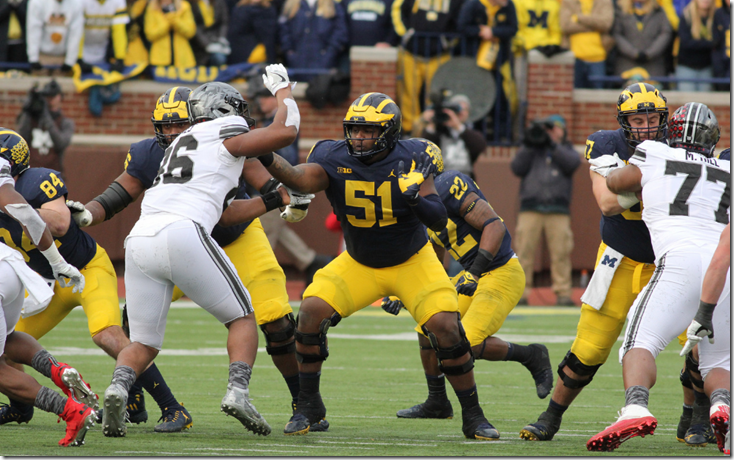
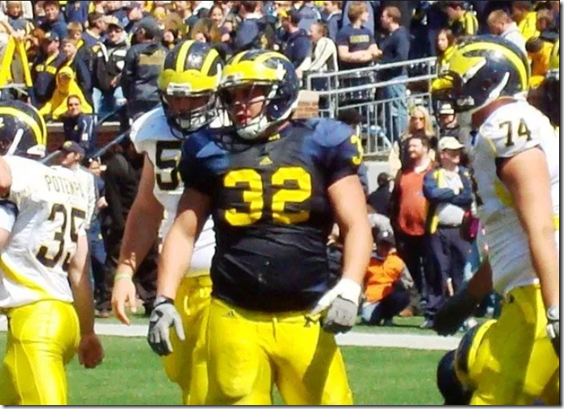
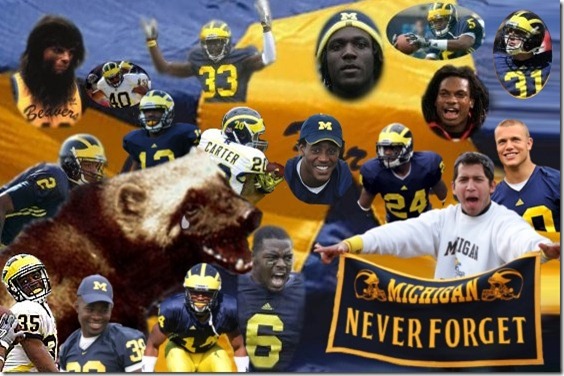
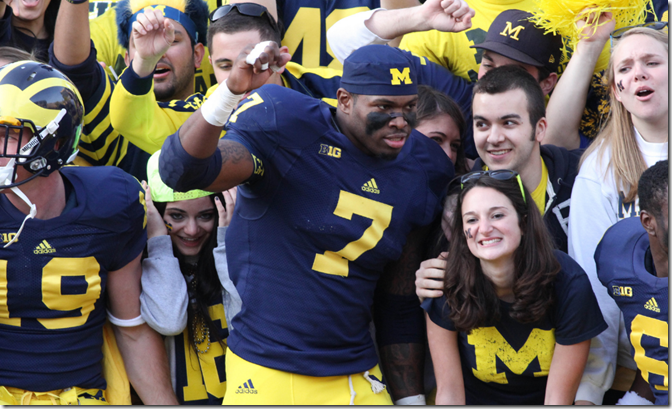
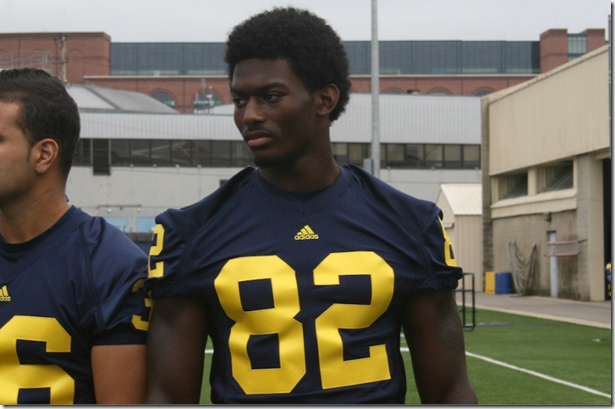
Comments